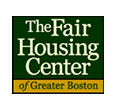1920s–1948: Racially Restrictive Covenants
Used nationwide to prevent people of color from purchasing homes in white communities.
Although it is unclear how widespread the practice of racial covenants was in Massachusetts specifically, the following presents a national context.
What is a racially restricted covenant?
A covenant is a legally enforceable “contract” imposed in a deed upon the buyer of property https://www.bostonfairhousing.org/payday-loans.html. Owners who violate the terms of the covenant risk forfeiting the property. Most covenants “run with the land” and are legally enforceable on future buyers of the property.
Racially restrictive covenants refer to contractual agreements that prohibit the purchase, lease, or occupation of a piece of property by a particular group of people, usually African Americans. Racially restrictive covenants were not only mutual agreements between property owners in a neighborhood not to sell to certain people, but were also agreements enforced through the cooperation of real estate boards and neighborhood associations. Racially restrictive covenants became common after 1926 after the U.S. Supreme Court decision, Corrigan v. Buckley, which validated their use.
How did racial covenants originate?
The practice of private, racially restrictive covenants evolved as a reaction to the Great Migration of Southern blacks and in response to the 1917 Court ruling (see Buchanan v. Warley) which declared municipally mandated racial zoning unconstitutional. Buchanan dealt only with legal statutes, thus leaving the door open for private agreements, such as restrictive covenants, to continue to perpetuate residential segregation.
A typical covenant included the following:
“…hereafter no part of said property or any portion thereof shall be…occupied by ay person not of the Caucasian race, it being intended hereby to restrict the use of said property…against occupancy as owners or tenants of any portion of said property for resident or other purposes by people of the Negro or Mongolian race.”
The practice of using racial covenants became so socially acceptable that in “1937 a leading magazine of nationwide circulation awarded 10 communities a ‘shield of honor’ for an umbrella of restrictions against the ‘wrong kind of people’.1 The practice was so widespread that by 1940, 80% of property in Chicago and Los Angeles carried restrictive covenants barring black families.2
1. “Understanding Fair Housing,” U.S. Commission on Civil Rights Clearinghouse Publication 42, February 1973. (PDF)
2. Ibid

